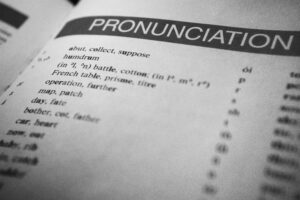It is an undisputed fact that over the last years the increasing numbers of students facing learning difficulties during their school years has led to an increasing awareness with regards to exploring learning difficulties in the community of education. SpLD is a term referring to varied disorders which are apparent through difficulties in the process of acquisition and use of reading (dyslexia), writing (dysgraphia) or mathematical (dyscalculia) abilities in spite of the fact that conventional instruction takes place. Various definitions have been given to the term SpLD throughout the years. In particular, the Diagnostic and Statistical Manual of Mental Disorders(DSM-5) uses the term “specific learning disorder” which occurs when the individual faces obstacles and they are not able to “perceive and process information efficiently and accurately”(APA, 2013 p.75). On the other hand, the International Classification of Diseases (ICD-11) suggests that learning disorders, which are developmental, affect the individual and leads to impairment in academic or occupational functioning.
Despite the various given definitions, recent research has established that the main idea for what spLD are is universal. In particular, according to Reid et. al., (2016) the term “specific learning difficulties” refers to children who face diverse challenges in areas such as literacy, numeracy, writing, or attention and there is also a possibility that other aspects of learning may be included, which may prevent students from effectively completing the learning and acquisition process. The term has been claimed to be an umbrella term including dyspraxia, dyscalculia, dysgraphia and dyslexia. SpLD is described as “a condition which is affected by the way information is learned and progressed” (British Dyslexia Association website). It needs to be underlined that it is not a single disorder, but a combination of co-occurring disabilities covering numerous areas. Due to the lack of one agreed-upon definition there seems to be a dispute on whether the identification rates are clear or not.
Even though a sole universally agreed definition of SpLD remains a debatable issue, the general concepts and characteristics are comprehensively accepted. In fact, learning disabilities have an impact on the academic skills of the individuals, namely reading, writing or/and arithmetic. Their performance is usually lower than expected compared to age and level. Specific learning difficulties refer to students who learn at a slower pace than their peers, even when differentiation takes place. According to Fletcher et. al. (2019), learning disabilities are difficult to measure and hard to define. Additionally, learning disabilities are not directly linked to emotional or mental disturbance, lack of availability of education or sociocultural end environmental disadvantages (Lyon, 1995). On the contrary, SpLD are claimed to be the result of central nervous system dysfunction as well as they are considered to be an undetectable weakness and are the reason why children do not reach their full potential at school and perform poorly (Karande et. al., 2005). Thus, learning disabilities can occur unexpectedly in every capable child.
Among learning disabilities, dyslexia is the most prevailing, since it is the most common studied, affecting almost 80% of the learning disabled. According to the International Dyslexia Association (2017) a percentage of 15% of the population present some symptoms of dyslexia and 1 out of 10 students in a classroom is dyslexic as well. Given that students facing dyslexia are estimated to reach a number between 5 and 10% around the world, it is of paramount importance to give an account of what dyslexia is and what its effect on students’ performance at school is. The various characteristics of dyslexia are different from person to person, yet, they are connected to phonological processing or phonemic awareness. The Dyslexia Action Report in 2012 argues that dyslexia is completely comprehended and that doubts or objections should not exist with regards to what dyslexia is, still, experts such as Elliott and Grigorenko (2014) maintain that “the field has been unable to produce a universally accepted definition that is not imprecise, amorphous or difficult to operationalize” (p. 5).
It has been said that defining dyslexia has been a problematic area for a long time. Three areas are to best describe the origins of it-cognitive, biological and behavioral- and along with various paradoxes provide quite a satisfactory explanation. In their attempt to make sense of a written text, people make connections between what they see on the paper and the parts of spoken language. According to Shen (2013) it is probable that when it comes to a dyslexic person, these connections between the auditory and speech centers may not be achieved in a successful way, which shows that dyslexic people do not possess the ability to realize how these symbols are connected to the sounds. Due to the fact that they cannot achieve this, the written symbols do not have meaning to them. What has just been mentioned can be regarded by many as a cognitive factor for dyslexia, while a biological one for others, causing difficulties in reading and writing, which can be situated in the behavioral level as well.
The causal modeling mentioned above is just one part of the explanation. Environmental factors need also to be taken into account, as socioeconomic factors, educational background as well as cultural attitude do play a role. In her research in 2015, Koutsouraki draws the conclusion that the pace of learning varies among learners mainly due to the fact that skills’ acquisition is determined by factors such as the aforementioned. Likewise, Koutra (2018) by stating that “socio-cultural factors interact with cognitive ones, through complex processes and are critical to academic literacy” and also that “literacy is surrounded by values of the social environment that shape it” acknowledges the significance of factors other than the cognitive ones in explaining dyslexia. The common ground between the numerous explanations is hard to be seen and, consequently it is visible that even these days dyslexia has not been completely defined. According to the Rose Report in 2009 as well as the British Dyslexia Association “dyslexia is a learning difficulty that primarily affects the skills involved in accurate and fluent word reading and spelling”. Thus, what is universally accepted is the fact that dyslexia is a condition that makes it difficult for students to read and spell correctly (Mobinizad, 2018). So, literacy difficulty is the only universally recognized component of dyslexia.
Before teaching learners with SpLD, it is imperative for educators to be aware of what SpLD is but also getting familiar with each disorder’s characteristics so as to implement the most appropriate teaching method towards effectively transmitting their knowledge. Keeping up to date is of primary importance so, keeping our eyes and hear open to new information will contribute to effective and efficient learning.
References:
Association, B., 2020. British Dyslexia Association. [online] British Dyslexia Association. Available at: https://www.bdadyslexia.org.uk
Diagnostic and Statistical Manual of Mental Disorders(5th ed), (2013). Washington, London. American Psychiatric Publishing.
Elliott, J. G., & Grigorenko, E. L. (2014). The dyslexia debate. New York, NY, US: Cambridge University Press.
Fletcher et.al., (2019). Learning disabilities from identification to intervention. New York: The Guilford Press.
Karande, S.,et al.,( 2005). Comparison of cognition abilities between groups of children with specific learning disability having average, bright normal and superior nonverbal intelligence. Indian Journal of Medical Sciences. Vol 59,No 3,pp.95.
Koutra, K., (2018). DYSLEXIA: DIFFICULTIES AND CHARACTERISTICS OF A DYSLEXIC CHILD. Young Researchers Conference Proceedings. Vol 1, pp.17.
Koutsouraki, S. (2015). Teaching different students’ needs: The case of advanced readers. Pedagogical inspection. pp. 44.
Lyon, G., (1995) Research Initiatives in Learning Disabilities: Contributions from Scientists Supported by the National Institute of Child Health and Human Development. Journal of Child Neurology, Vol 10, No 1, pp.120-126.
Mobinizad, M., (2018). “What Are Dyslexia and Its Effects on Teaching Language Skills?”. Theory and Practice in Language Studies. Vol 8, No 2, pp. 218-225.
Shen, H., (2013) Dyslexia Linked to Brain Communication Breakdown. Available at:http://www.scientificamerican.com/article/dyslexia-linked-to-brain-communication-breakdown/.




